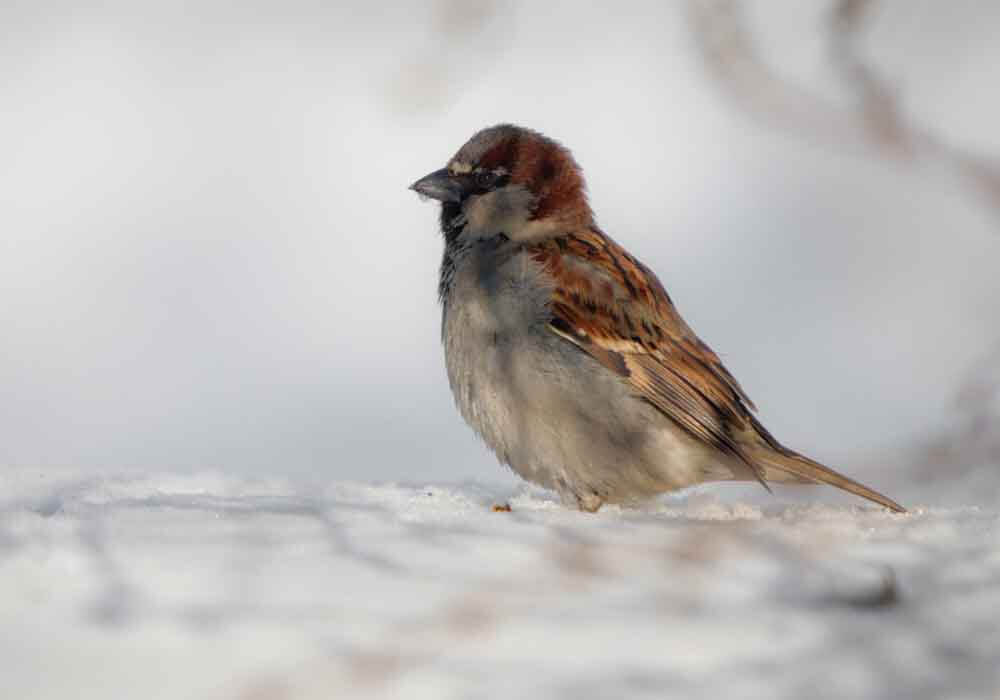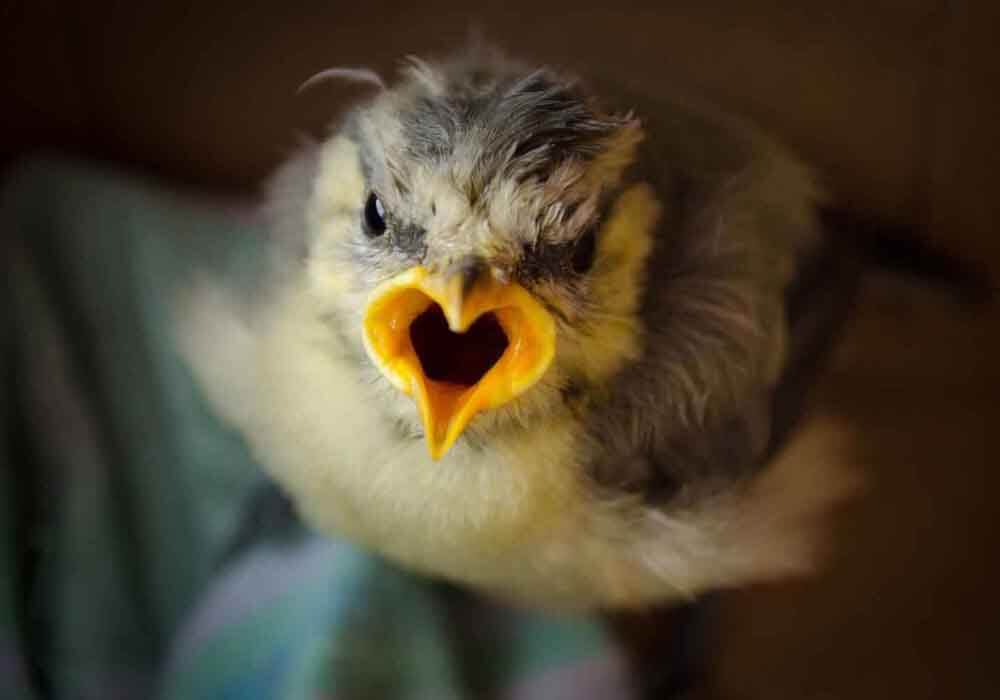What
Do Winter Birds
Do In The Winter?
Since They Don't Migrate How Do They Survive The Cold?
Winter birds are usually featured in our Christmas decorations, but you may wonder what they actually do during winter. Winter is known for freezing temperatures and sometimes harsh weather conditions, so what do winter birds do in the winter to fight the cold?
Winter birds are capable of storing fat to keep them warm during the long nights of winter. During this season, they are busy gathering food rich in fat and protein, which helps keep their bodies warm.
This article will discuss what winter birds do to survive winter’s cold temperatures and how they look for nourishment. Keep reading to learn more!

What Winter Birds Do To Survive Winter’s Cold Temperatures
Compared to humans, birds have a higher metabolism and body temperature. However, it can be challenging for birds to maintain it if the temperature of their environment drops drastically.
The average body temperature of a bird is 105 degrees Fahrenheit (40 degrees Celsius), and it can go up and down depending on the climate in which they are located, its diet, and its activities.
Here are some things winter birds have or do to survive the cold winter temperatures:
Feathers
Their feathers provide insulation against the cold. The oil that coats these feathers adds to that insulation and shields them from water.
Birds such as the black-capped chickadee also fluff out these feathers to make air pockets, which protect them from the cold and make them look puffier.
They also take advantage of sunny days during this season. They will turn their backs to the sun and slightly raise their feathers to expose their skin. This allows them to receive heat from the sun efficiently.
Extremities
Winter birds’ lower extremities are covered with unique scales that reduce the chances of losing body heat. They can also constrict blood flow to their extremities.
Their blood vessels are close to each other, which can heat cold blood returning to a bird's body and allows the conservation of body temperature through countercurrent exchange.
Some birds also stand on one leg, keeping the other tucked in their feathers.
Fat Reserves
Birds are warm-blooded animals and must spend more energy than usual to maintain their body temperature during winter.
To compensate for that, they eat more and build fat reserves under their skin, protecting them from the cold and providing additional energy to generate body heat. Large birds can store more fat than others and survive without eating for days.
Shivering
Birds tend to shiver to increase their metabolic rate and generate body temperature when needed. The process involves contracting opposing muscle groups that release heat. It briefly provides warmth during extreme winter conditions but requires more calories.
Huddling
Birds like the golden-crowned kinglet group together and use their bodies as a heat source to protect them from the cold, reducing their energy consumption. These are usually seen in tree branches or other areas where predators cannot locate them.
Which Birds Tend To Stay During Winter?
While most birds go to places with warmer temperatures at the onset of winter, some bird species stay in their usual places during this time. These birds have features that make them capable of surviving winter’s cold temperatures.
These winter birds include:
- American robin (Turdus migratorius)
- Snow bunting (Plectrophenax nivalis)
- Black-capped chickadees (Poecile atricapillus)
- Bohemian waxwings (Bombycilla garrulus)
- Boreal chickadees (Poecile hudsonicus)
- Golden-crowned kinglets (Regulus satrapa)
- Northern cardinals (Cardinalis cardinalis)
- Common redpolls (Acanthis flammea)
- California quail (Callipepla californica)
- Pine siskins (Spinus pinus)
- Tufted titmouse (Baeolophus bicolor)
- Blue jays (Cyanocitta cristata)
- Ruffed grouses (Bonasa umbellus)
- Canada jays (Perisoreus canadensis)
- Red-breasted nuthatches (Sitta canadensis)
- House sparrows (Passer domesticus)
- Dark-eyed juncos (Junco hyemalis)
- Downy woodpeckers (Picoides pubescens)

Be sure to check out my 23 Birds of Winter article which show pictures and descriptions of birds that stay put during the winter...Which ones have you seen in your neighborhood?
How Winter Birds Find Food During Winter
It can be challenging for animals, including birds, to find food during extreme weather conditions, especially during winter.
Winter birds look for the best location where they can find an abundant food source. Once the source has been consumed, they will look for another site and move there as soon as they find food in that area.
Some winter birds hoard food during summer and autumn and store it somewhere to have ample food supply during the winter. Birds are known to have a sharp memory, so they can remember where they kept their food or where there are several food sources.
Some birds, like the common redpoll, have specialized pouches in their esophagus that can store food. They are capable of slowly digesting that food at a later time.
Food Winter Birds Eat During Winter
Birds are resourceful in gathering their food during winter. Here are some of the food items winter birds eat during winter:
- Plant and flower seeds
- Nuts
- Insects, including their larvae and pupae
- Suet or fat balls
- Tree saps
- Leftover fruits from autumn
- Fruits with high water content
- Grains and cereals
- Bread crumbs
- Small animals, including mice, small birds, and fish
- Dead animals
Helping Birds During Winter
Birds that are living in the wild are capable of finding their food and shelter during winter, but that should not stop us from helping them properly. Here are some things that you can do to help birds survive the winter season:
- Provide the birds with high-energy, good-quality food like suet, unsalted peanuts, sunflower seeds, and mealworms to help them thrive.
- Clean your backyard feeders regularly to prevent attracting unwanted animals like mice, squirrels, or raccoons.
- Keep the food from having moisture by placing them in a container.
- Provide food in small amounts during extreme weather conditions or heavy precipitation.
- Know the times of the day when food can be available to birds.
- Planting natural fruit, seed, or nut-bearing trees can be a great source of birds for their food and protection. You can also make a brush pile for the birds.
- Provide a water source for the birds by placing a bird waterer, shallow dish, or heated bird bath in your backyard and refilling it regularly to prevent the water from freezing.
- If you use a bird bath, do not add salt or antifreeze to the water, as they can harm the birds. Also, ensure that you use a proper outdoor extension cord to prevent electrocution.
- You can install roosting or nesting boxes for birds during this time. You can close any ventilation holes in those boxes to keep the inside part of the box warm.
- Place the backyard feeders around 4 feet (1.22 meters) above the ground to protect the birds from predators. There should be no obstructions in the feeders so they can fly quickly in case predator birds come to them.
- Isolate any bird that looks sick. Call for help to properly handle sick birds.

Winter birds love heated bird baths. Not only do they provide a water source that isn't frozen over, but also a warm bath! Here's an article of mine about their Pros and Cons.
What Do Winter Birds Do In The Winter
Final Thoughts...
Winter birds have specialized body parts and behaviors that make them capable of surviving winter’s severe conditions. They are well trained in the wild to look for food or shelter. As most birds migrate to a location with a warmer climate, winter birds can still thrive during winter.
While they may not need humans to survive, we can help these birds by providing them with a safe place where predators cannot reach them and where they can eat food to help them increase their body temperature.
Back To The TOP Of What
Do Winter Birds Do In The Winter Page

About the Author...
Richard Worden, a dedicated bird lover for over 20 years, I love to share my in-depth knowledge and passion for birds. Read more About Me and my expertise in this field.
- We Know Birds HOME ›
- Bird Behavior Facts and Information ›
- What Do Winter Birds Do In The Winter?



